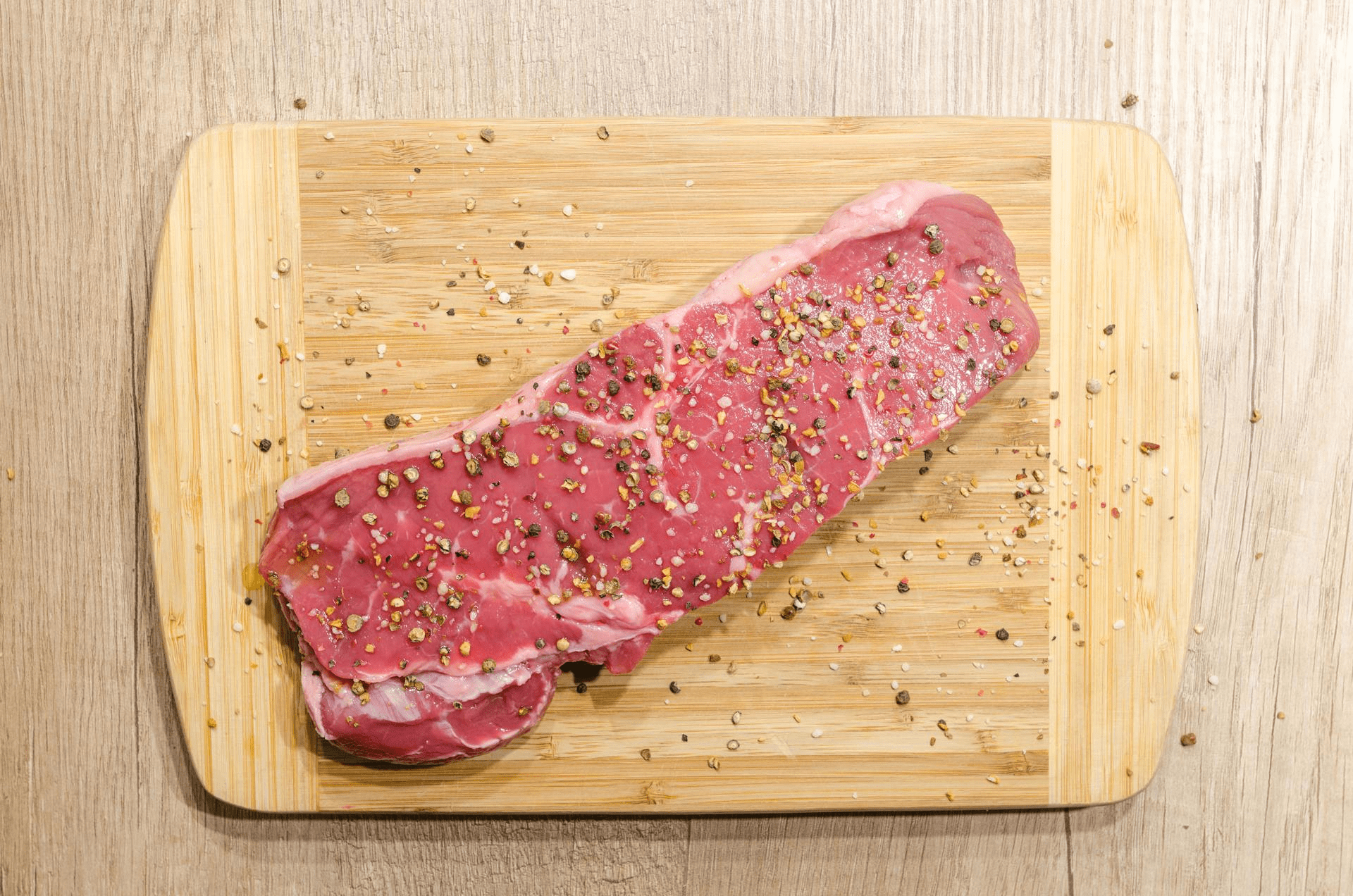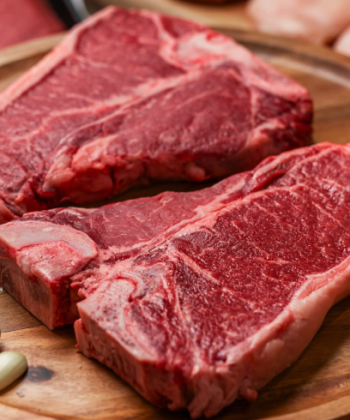
Beef, though often considered unhealthy for individuals with high cholesterol, offers several benefits for those who can burn the fat and calories it contains. Rich in protein, iron, and essential vitamins, beef is a powerhouse of nutrients that can contribute to a balanced diet when consumed in moderation. For those who enjoy a good steak, knowing how to cook it to perfection is essential. The key to a healthy and well-cooked beef steak lies in understanding the right tips and techniques.
This guide will walk you through the critical steps, starting with choosing the right cut of beef.
1. Choosing the Right Cut of Beef
Selecting the appropriate cut of beef is the foundation of a great steak. Each cut offers a unique flavor, texture, and level of tenderness. Popular choices include ribeye, sirloin, and filet mignon. Ribeye is known for its rich marbling, making it flavorful and juicy, while sirloin offers a leaner option with a robust flavor. Filet mignon, on the other hand, is prized for its tenderness.
For those seeking a premium experience, wagyu beef stands out as an exceptional choice. Known for its buttery texture, wagyu beef delivers a luxurious steak experience. However, when preparing wagyu, it’s essential to cook it with care to preserve its delicate flavor.
Here’s a wagyu ribeye steak recipe
Here’s a wagyu ribeye steak recipe for first-timers.
To cook a wagyu ribeye steak, start by bringing the steak to room temperature. Season it lightly with salt and pepper. Heat a cast-iron skillet over medium-high heat until it is smoking hot. Place the steak in the skillet and sear for 2-3 minutes on each side, depending on thickness. Reduce the heat to medium and cook to the desired doneness, usually an additional 2-3 minutes per side for medium-rare. Let the steak rest for 5-10 minutes before serving.
2. Understanding Beef Grades
The grading system for beef helps consumers identify the quality of the meat. In the United States, beef is graded as Prime, Choice, or Select, with Prime being the highest grade. Prime beef is well-marbled and offers superior tenderness, juiciness, and flavor, making it ideal for grilling or pan-searing. Choice beef is slightly less marbled but still provides good quality, while Select is leaner and may require careful cooking to avoid dryness.
For special occasions or when you want the best possible steak, opting for Prime beef is recommended. However, Choice beef can also yield excellent results with the proper cooking technique.
3. Properly Seasoning Your Steak
Seasoning is a critical step in cooking the perfect beef steak. The right seasoning enhances the natural flavor of the meat without overpowering it. A simple seasoning of salt and pepper is often all that is needed. For a more complex flavor, you can add herbs like rosemary or thyme.
It’s essential to season the steak generously and let it sit for at least 30 minutes before cooking. This allows the seasoning to penetrate the meat, leading to a more flavorful steak. If using a dry rub, apply it evenly and let the steak rest to absorb the flavors.
4. Bringing the Steak to Room Temperature
Bringing the steak to room temperature before cooking ensures even cooking throughout the meat. Cold steaks placed directly on a hot surface can result in an uneven cook, with the outside overcooked and the inside undercooked.
Take the steak out of the refrigerator at least 30 minutes before cooking. This step allows the steak to warm up slightly, which helps achieve consistent doneness. It’s a simple but crucial step in the steak-cooking process.
5. The Right Cooking Technique
There are several ways you can cook a steak. The most popular methods include grilling, pan-searing, and broiling. Each technique has its own merits, and the choice depends on personal preference and the equipment available.
Grilling is ideal for those who enjoy the smoky flavor that only an open flame can provide. It’s a popular choice for outdoor cooking and works well with cuts like ribeye and sirloin. When grilling, make sure you preheat the grill to high heat and sear the steak on both sides to lock in the juices. After searing, move the steak to a cooler part of the grill to finish cooking.
Pan-searing is perfect for those who prefer to cook indoors. A heavy skillet, such as cast iron, is best for this method. Pan-searing allows for precise control over the cooking process and is excellent for achieving a crispy, flavorful crust. Start by heating the pan over high heat, adding a small amount of oil, and then searing the steak on both sides. Lower the heat to finish cooking the steak to the desired doneness.
Broiling involves cooking the steak under high, direct heat in an oven. This method is similar to grilling but doesn’t impart the same smoky flavor. Broiling works well for thinner cuts and is a convenient option for indoor cooking. Place the steak on a broiler pan and cook it close to the heat source, flipping halfway through the cooking time.
6. Pairing the Steak with Sides
The right side dishes can elevate a steak dinner, complementing the rich flavors of the meat. Classic pairings include roasted vegetables, mashed potatoes, and fresh salads. These sides offer a balance of flavors and textures that enhance the steak without overpowering it.
Roasted vegetables such as asparagus, carrots, or Brussels sprouts add a healthy and flavorful component to the meal. They can be seasoned with herbs and olive oil, then roasted until tender and caramelized.
Mashed potatoes are a traditional steak side, offering a creamy contrast to the meat’s robust texture. For a healthier twist, consider using sweet potatoes or cauliflower mash.
Fresh salads with ingredients like arugula, spinach, or mixed greens can provide a refreshing counterbalance to the richness of the steak. Add a light vinaigrette or lemon dressing to keep the salad simple and let the flavors of the steak shine.
7. Common Mistakes to Avoid
Even with the best intentions, there are common mistakes that can compromise the quality of a steak. One frequent error is overcooking, which can result in a tough and dry steak. Using a meat thermometer can help avoid this by ensuring the steak is cooked to the desired doneness.
Another common mistake is under-seasoning. While it’s important not to overpower the natural flavor of the beef, inadequate seasoning can leave the steak tasting bland. Be sure to season the steak generously with salt and pepper before cooking.
Skipping the resting step is another mistake that can lead to a less satisfying steak. Cutting into the steak too soon will cause the juices to run out, leaving the meat dry.
The satisfaction of slicing into a steak that you’ve cooked to perfection, with its rich flavors and tender texture, is unmatched. By following these techniques, you’re not just preparing a meal; you’re honing a skill that will bring joy to your table time and time again. Cooking a great steak is an achievement that reflects care, attention to detail, and a passion for good food—qualities that are just as rewarding as the steak itself.


